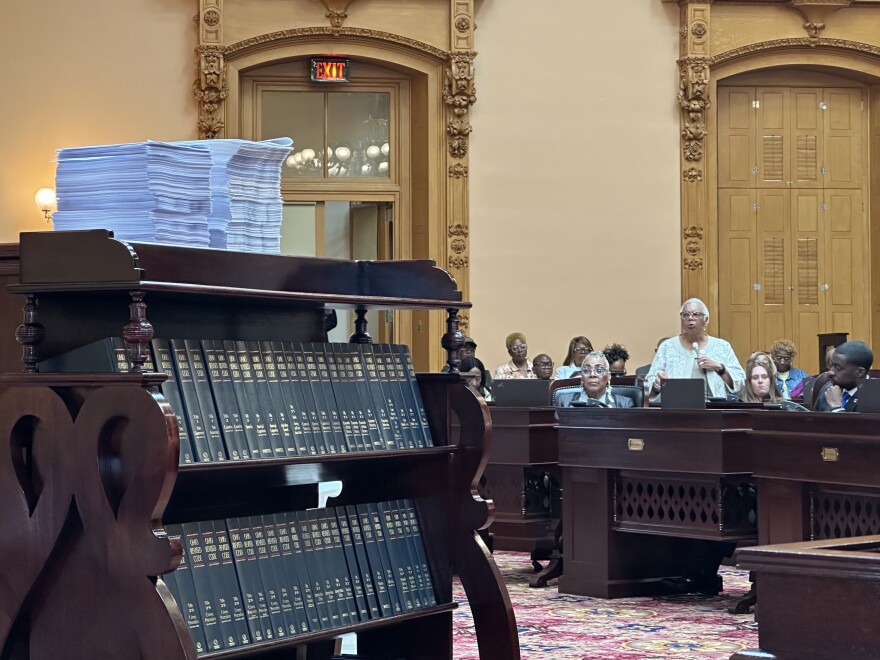Both chambers of the Ohio General Assembly greenlit the final version of the GOP-majority biennial state budget Wednesday, mostly along partisan lines. That means after months of negotiations, House Bill 96 is headed to Gov. Mike DeWine for his signature, and perhaps some line-item vetoes.
The 59-38 vote in the House and 23-10 vote in the Senate came less than 24 hours after the conference committee, which harmonizes budget differences behind closed doors, released the latest draft of the 2026-2027 budget. HB 96 cleared committee by 4-2 in the early hours of Wednesday, around 1 a.m. and after hours of delay.
Much of it is defined by an effort to flatten the state income tax, transitioning down from the current two-bracket system to a flat rate for everybody making over $26,050 annually at 2.75% by tax year 2026. That would most immediately affect Ohioans who make more than six figures, if it goes into effect, saving them and costing Ohio more than $1 billion across the biennium, according to legislative analysis.
“Budgets are about choices. It’s about which Ohioans we are choosing to invest in, and who are we choosing to ignore or underfund, and this budget was very clear ... It chose the wealthiest, highest earning Ohioans,” House Minority Leader Dani Isaacsohn (D-Cincinnati) said Wednesday.
To account for the tax cut, members were told to be “deliberate” in their budget revisions, Senate Finance Chair Jerry Cirino (R-Kirtland) said.
Some government programs and projects will face cuts because of the effort to balance the budget.
Between the Ohio Environmental Protection Agency and Departments of Agriculture and Natural Resources, there are tens of millions of dollars in funding reductions to H2Ohio, DeWine’s cross-agency clean water initiative. Lawmakers also ultimately rejected his request for a $7.5 million earmark toward infant mortality, reducing it to $5 million.
HB 96 will overhaul K-12 public school funding, partly by dictating the amount of collected property taxes districts can hold onto as carryover balances before property owners would be refunded. The House and the Senate met halfway at 40%.
“When we see school districts carrying over in some cases 70%, 80%, 90%, sometimes well over 100% of their annual expenditures year-to-year, it stands to reason that there should be an explanation for why they need to carry over that much money,” Senate President Rob McColley (R-Napoleon) said Wednesday. “This will deliver needed relief.”
The budget increases money put toward private school vouchers, including by establishing an educational savings account.
As for the closely-watched eventual domed stadium in Brook Park for the Cleveland Browns, the conference committee landed on a performance grant program funded by a percentage of money managed by the Ohio Department of Commerce’s Division of Unclaimed Funds.
Assets turned over to the division come from Ohioans’ dormant bank accounts and uncashed checks, among other sources.
HB 96 will divert $1.7 billion of the $4.8 billion in unclaimed funds held by the state to this new sports facilities fund, with $600 million earmarked for a cash grant for Haslam Sports Group. Assets turned over to the division come from Ohioans’ dormant bank accounts and uncashed checks, among other sources.
The budget also changes law banning teams in stadiums funded publicly from moving, which leaders said would settle a lawsuit over the team’s move away from downtown Cleveland.



